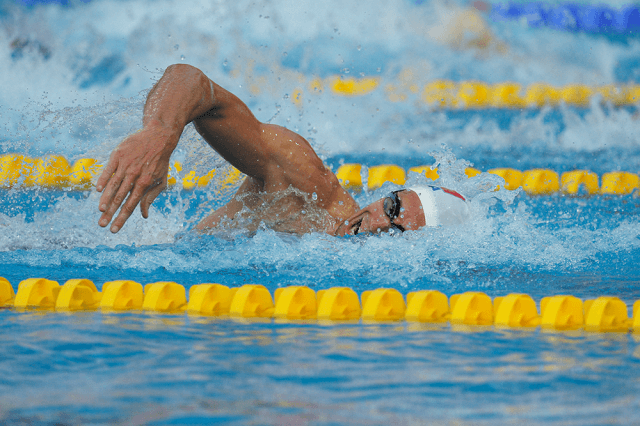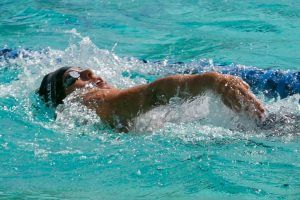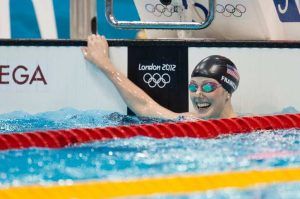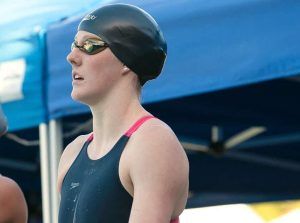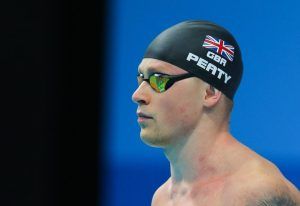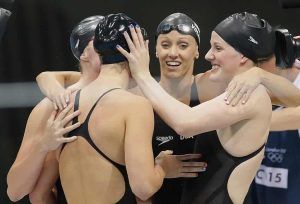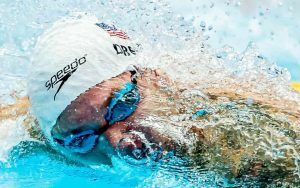Here is what you need to know:
- Doing more isn’t always better when it comes to training.
- Slow it down in order to see where your technique stacks up.
- Train the way you compete, so that when race-time comes along you can rely on your good swimming habits.
- Form is everything.
- Keep a feedback loop open.
- Pick out goals for each session in the pool.
- Track and measure to leverage the things helping your training.
Swimmers pride themselves on their exceptional work ethic. Training ten times per week, two hours per session, plus dryland, for 11 months of the year would seem like insanity to the participants in other sports.
Swimmers wear this workload like a badge of honor.
Coaches like Mike Bottom (University of Michigan) and Dave Salo (USC Trojans) have been advocating a lower volume, quality-based approach for years, and this line of thinking has become more and more mainstream in recent years.
Simply because we are putting the hours in at the pool doesn’t necessarily correspond to good technique and optimal results.
If you aren’t training tactically, focused on improving your technique, and swimming mindfully, then you are just swimming mindless laps up and down the pool.
This might be okay for general fitness purposes, but if you are wanting to take your swimming to the outer reaches of your abilities, than you gotta start practicing a little smarter.
Here are 9 tips for unleashing a high-IQ practice the next time you head to the pool–
1. Start by visualizing what you want your perfect race to look like.
What does your goal race look like? What are the components and chunks that will make up the swim you want to unleash at the end of the year? Break your perfect race apart piece by piece, and start attacking each segment one at a time in workout.
The surest way to boredom in the pool is to have no purpose, no direction.
Getting specific about the areas you want to improve results in a more engaged workout, as it is difficult to be both specific as well as absent minded.
2. Slow it down.
Training fast is great, but training great with poor form? Not so much.
A great way to identify spots in your technique where you can make improvements is to slow it down, take your foot off the gas pedal and swim with slow, careful precision.
Feel where the water is slipping from your pull, or where your kick is slowing you down more than speeding you up, or where you are over or under rotating your torso.
Super slow swimming acts as a magnifying glass of sorts, exaggerating the errors in your technique, and gives you the feedback to make adjustments.
Once you correct the errors, speed things back up.
3. Identify leaks.
Strive to train the way you want to compete.
Why is this important?
Because the way that we swim come competition time is simply an echo of what we have been doing in training.
Knowing this, what will your swimming look like when you get ready for the big race? If you are breathing in and out of the turns in practice, you’ll do the same in a race. If you pick your head up at the wall at the end of every repeat, you’ll do the same at the end of a race when every little hundredth counts.
Train like you race, so that when you race when you train your good habits will take over.
4. Be aware of when form starts to falter.
There will always be a point where you will hit diminishing returns. Never heard of the Law of Diminishing Returns?
Here is an example: Your friend tells you a joke. You laugh. One minute later, he tells the joke again. You feign a chuckle. Again, a minute later, he tells the same joke. Crickets. At this point not only has the joke lost its original purpose and punch, but by the third time it has actually induced the opposite intended effect. Instead of laughing, you’re unamused, annoyed.
At some point the same thing happens with your training.
There is always going to be a point where too much of a good thing become counter-productive. When your focus starts to waver, your technique starts to crumble, then this is your point of diminishing returns, and to continue on does you no good.
5. Start small.
If you are finding yourself being overwhelmed by things to focus on, break it down.Trying to do too much at once, trying to adjust too many areas of your swimming at one time waters down your efforts to the point that you are simply doing a whole bunch of stuff poorly.
Instead, summon some patience and work on your swimming, piece by piece.
Start with the catch, and work on it until your “perfect” catch is second nature. From there move to the pull, exit of the hand, trunk rotation, and so on. Perform each section perfectly until it becomes hard-wired into habit.
6. Make sure you are getting feedback from your coach.
Is your technique getting better? Are you swimming faster? Are you averaging faster times?
Without feedback and results we are flying blind, unsure if what we are doing is helping or hurting. We like to think that we know exactly what our swimming looks like, but often our brains deceive us. What feels like hand entry in front of the shoulder is actually in front of your head, and so on.
Get the feedback necessary so that you can improve and tinker with your technique in order to swim as efficiently as possible.
(Conversely, if you don’t have a coach, and are doing the process solo, consider getting some video analysis done of your stroke.)
7. Have Session-Based Goals.
This is my favorite trick for staying focused over the course of those long sessions in the pool. Before each practice I will choose one thing that I am going to absolutely crush. One day it will be doing perfect turns. Another it will be achieving a specific interval.
By consistently setting (and mostly achieving) little, session-based goals a recurring sense of confidence and pride develops from your training.
Give it a try for a week and see if it doesn’t have you more focused and more confidant in your abilities.
8. Adjust to the fact that more is not better.
The idea that doing less meters or yards produces better results seems mind-blastingly counter-intuitive. After all, our common reaction to when something is faltering – speed, technique – is to more, more, more. Stop looking at the overall number of yards you are doing, and instead track the overall number of quality yards you are doing.
9. Track your workouts.
The benefits of measuring your workouts and tracking your progress are plenty; improved motivation, increased consistency, and of course, a valuable feedback tool to explain habits and help build new ones. Logging your swim workouts (don’t forget your dryland workouts, too!) can especially show you when you have plateaued and need to take a much needed deload.
More Stuff Like This
3 Swimming Workouts for Beginners. Looking for some beginner swim workouts that you can easily adjust according to your current fitness and skill level? Here are three of my favorites.

